As the founder of an environmental design office, Yussef Agbo-Ola creates very special objects. He has even created something extraordinary for the Sharjah Architecture Triennial: the Nono: Soil Temple, which unites all aspects of life.
A temple is a holy house. And that is exactly what makes it so special. Because nothing is as diverse and individual as holiness itself. Ultimately, you decide for yourself what is sacred in the truest sense of the word. If a temple can unite all these individual needs, then the result can be described as extraordinary without exaggeration.
Architecture is sacred to Yussef Agbo-Ola. At least that is the impression one might get when looking at his work. As an architect, artist and founder of Olaniyi Studio, he lives both in London and in the Amazon. Two places that couldn’t be more different. And perhaps it is precisely this difference that lies at the heart of the architect’s creative ideas.
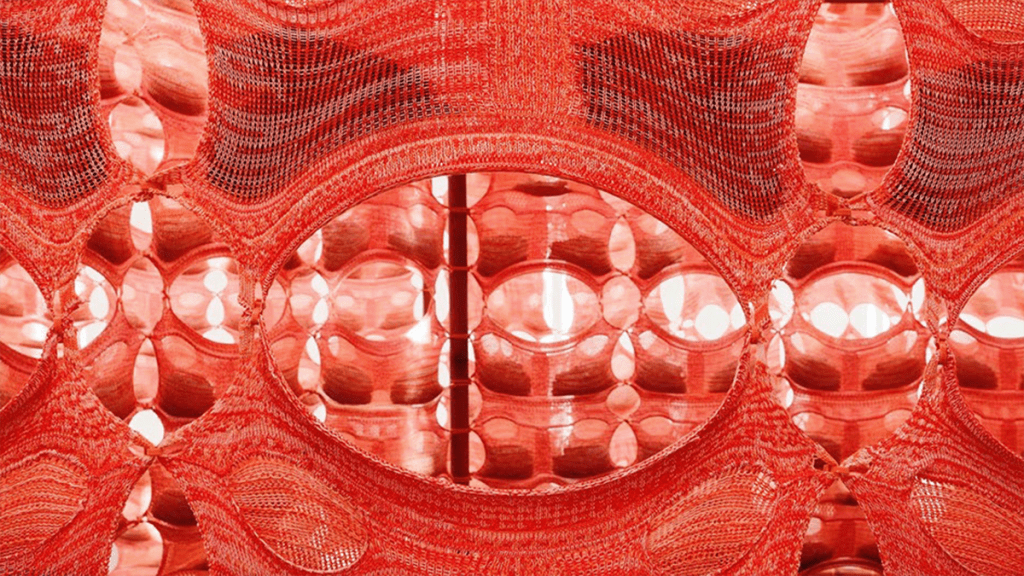
Transformation
Yussef Agbo-Ola has come up with something very special for the Sharjah Architecture Triennale. A temple of union, the Nono: Soil Temple, which is also named Jabala: 9 Ash Cleansing Temple as part of the exhibition. ‘A temple conceived as a spiritual entity, a sacred space that invokes the healing power of soil and draws on its ability to transform, nourish and release life,’ as Agbo-Ola explains.
With the temple, the architect has created a place that has a lot to offer. Conversely, it also demands a lot from its visitors.
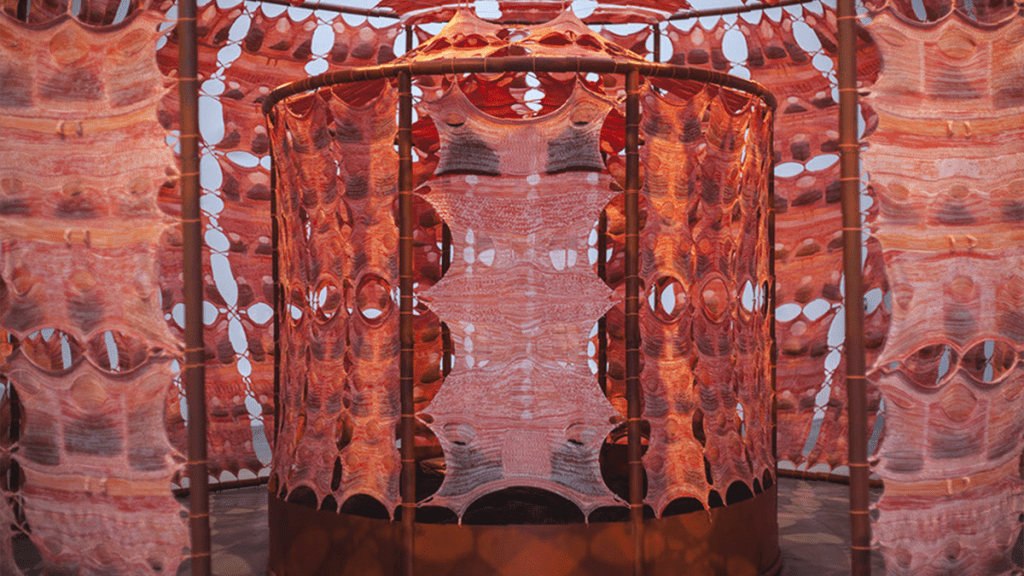
‘Those who walk on the ground should energise it by singing, dancing and praying, and in return they can also be mothered by the bosom of the earth,’ says Yussef Agbo-Ola. A powerful exchange, a give and take. And those who may find it difficult to move on this energetic level will receive musical support. Namely from so-called Soil lungs in iron ash. A work of sound that gives the temple a voice. Yussef Agbo-Ola: ‘The sound work is based on research into rituals, shamanism and the practices of healers, which can create new and deeper connections to our ecological environments’.
Nourishing soil
The idea of the architect of the Nono: Soil Temple is continued in the architectural structure of the soil: Within it, vital minerals rest in organic matter, while billions of bacterial cells form a rhizosphere, an area surrounding the roots. This sphere serves as a micro-framework for the network of electrical signals sent between plant and soil to ensure healthy collective plant growth.
Like a mother’s fertile womb, the soil is the earth’s nourishing apparatus for the development of life on land. The interweaving of its micro- and macro-chemistry forms the basis for the function of its children: humans, plants and animals. Soil enables plants to produce the air we breathe and the food we eat, but it also has a deep spiritual connection to our well-being.
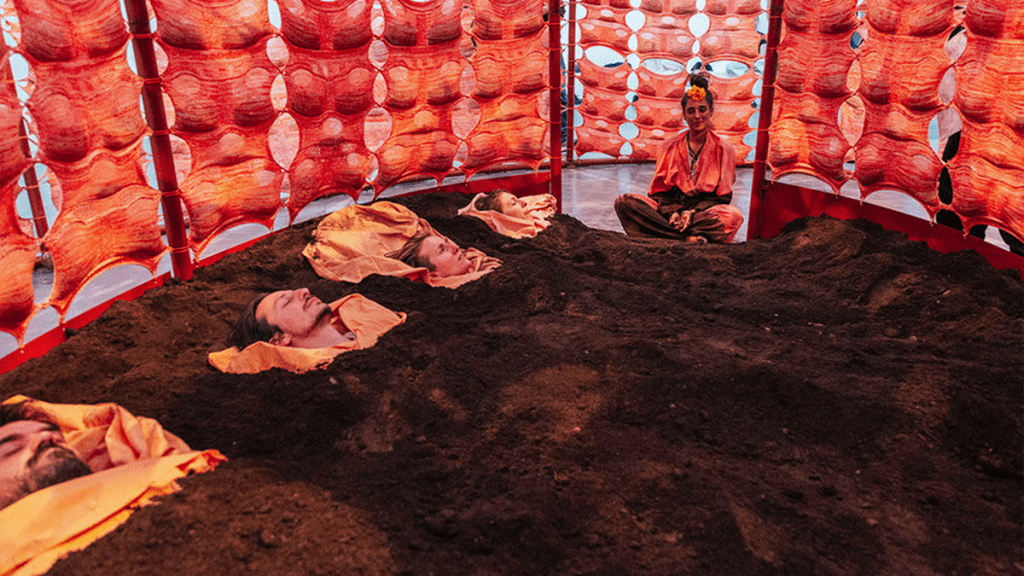
In the innermost part of the temple – you could also say in its womb – there is a floor lined with earth. Its healing properties inspired the design. Earth is the element that connects everything. This connection is also expressed in the framework of the temple. Pieces of fabric were knitted from jute, hemp and cotton yarns, which were later sewn together to form a large whole that encases the structure of the temple.
The shape and colour of the tent-like structure is reminiscent of the Jebel Jais mountain in Sharjah’s neighbouring district of Ras Al Khaimah. ‘I firmly believe that mountains are the mothers that carry the wisdom and DNA of an environment,’ says Agbo-Ola. The crocheted fabric separates the inside from the outside, but the boundary is fluid. The many open spaces in the fabric form dancing patterns, depending on the incidence of light. Every angle opens up a new perspective.
‘When these organisms, symbolically represented in the knitwear, are linked together in the Nono: Soil Temple, they create a new visual ecosystem as a symbolic form of their interdependence for ecological balance,’ Yussef Agbo-Ola.
Created to live
According to Agbo-Ola, the building was also designed to celebrate fertility and the natural process of transformation. After the exhibition, the architect managed to move the temple to its intended location – the rainforest of French Guiana. And it really does look as if the temple had decided to be at home there, embedded in nature. Those who visit this natural temple find strength, nature and life and become part of its spiritual rituals. And this applies to all living beings. A special feature of the crocheted pieces of fabric is that living space is created in the spaces between the joined fabric. Birds occasionally use these spaces for their nests, but all kinds of other animal inhabitants of the rainforest also find a place to linger in the temple.
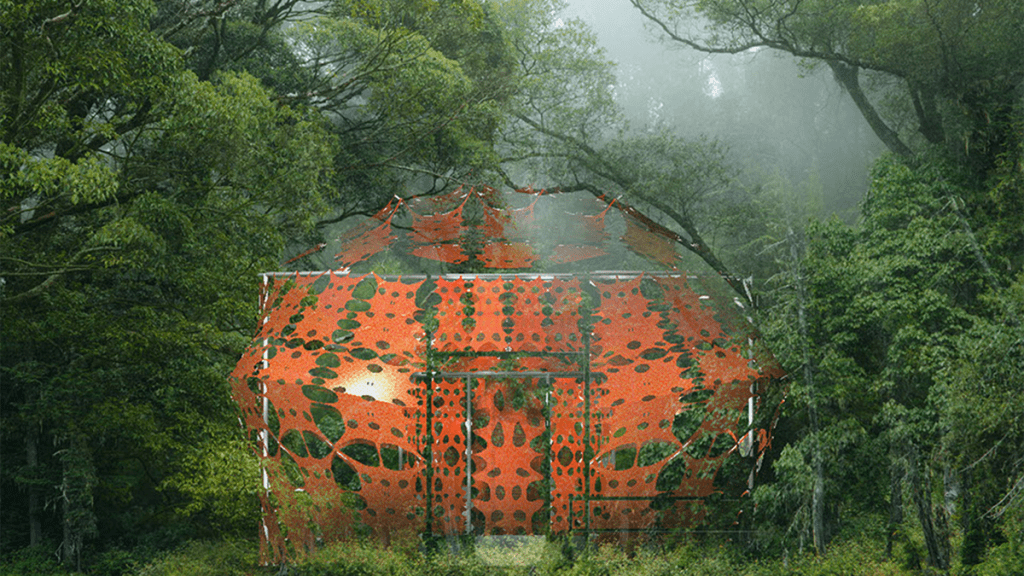
‘The Nono: Soil Temple is conceived in the sense that each fabric skin in the design should be viewed from the perspective of the single thread that holds it together,’ says Yussef Agbo-Ola. ‘The decay that occurs when a microscopic organism eats the fibres of the temple or lays eggs on it is just as important as the overall shape and form of the temple on a macro level.’ The temple only comes to life in nature, with it it becomes transient. And so the temple gives back what it has taken.
Text: Eva Schroeder
Bilder: Olaniyi Studio


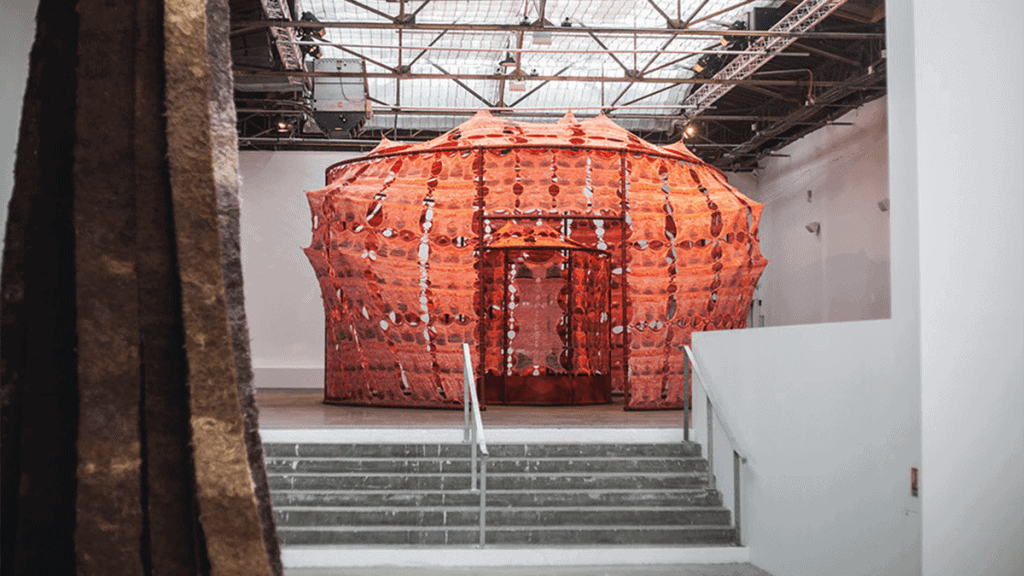
iThere are no comments
Add yours